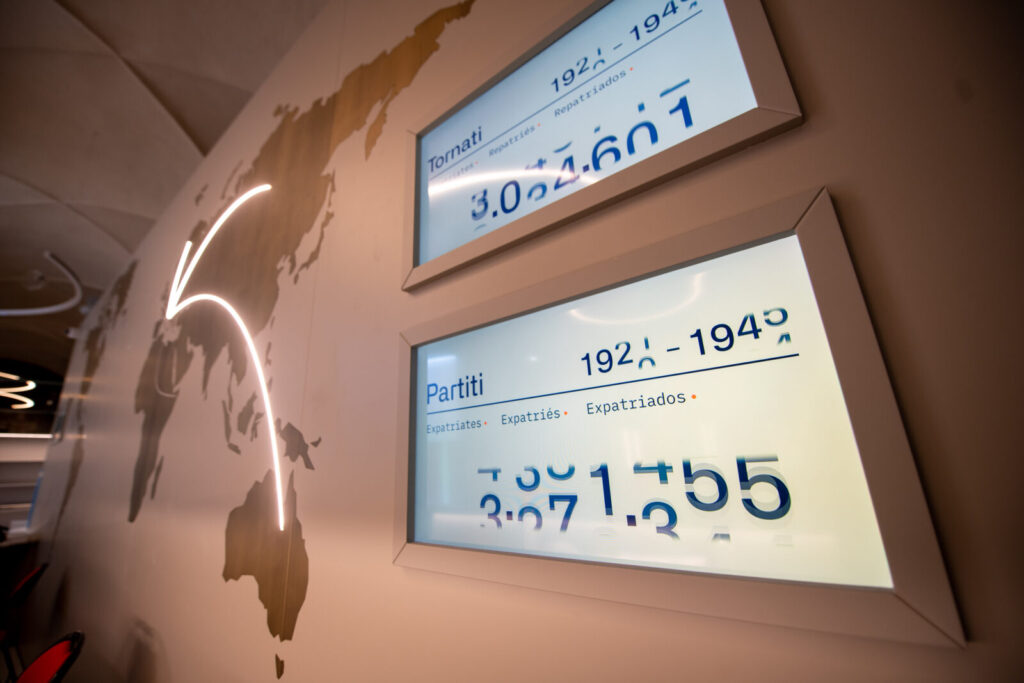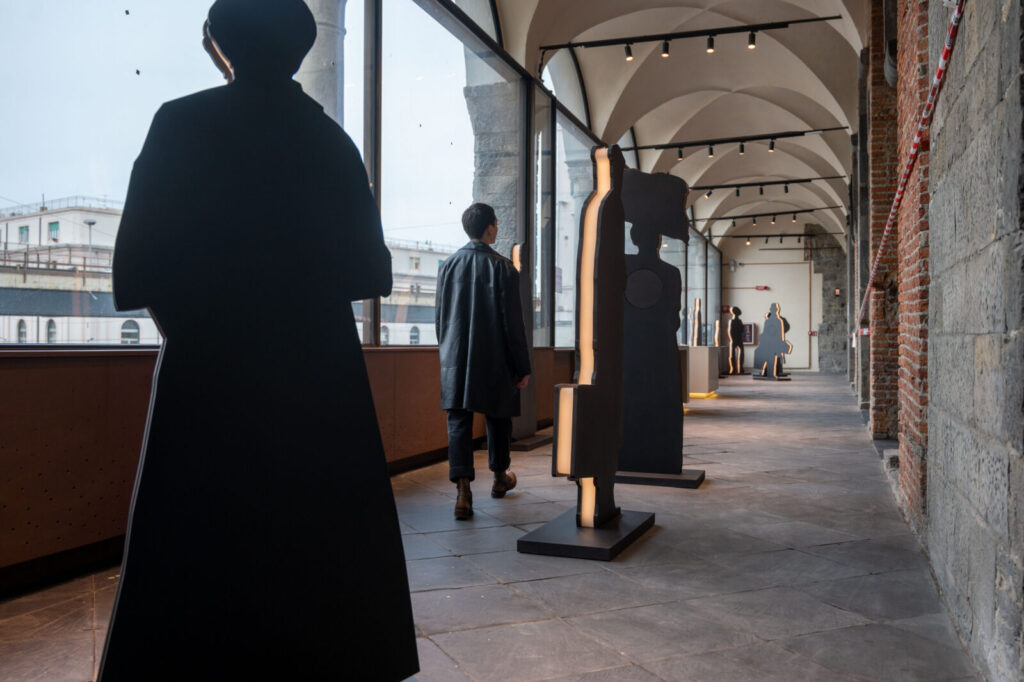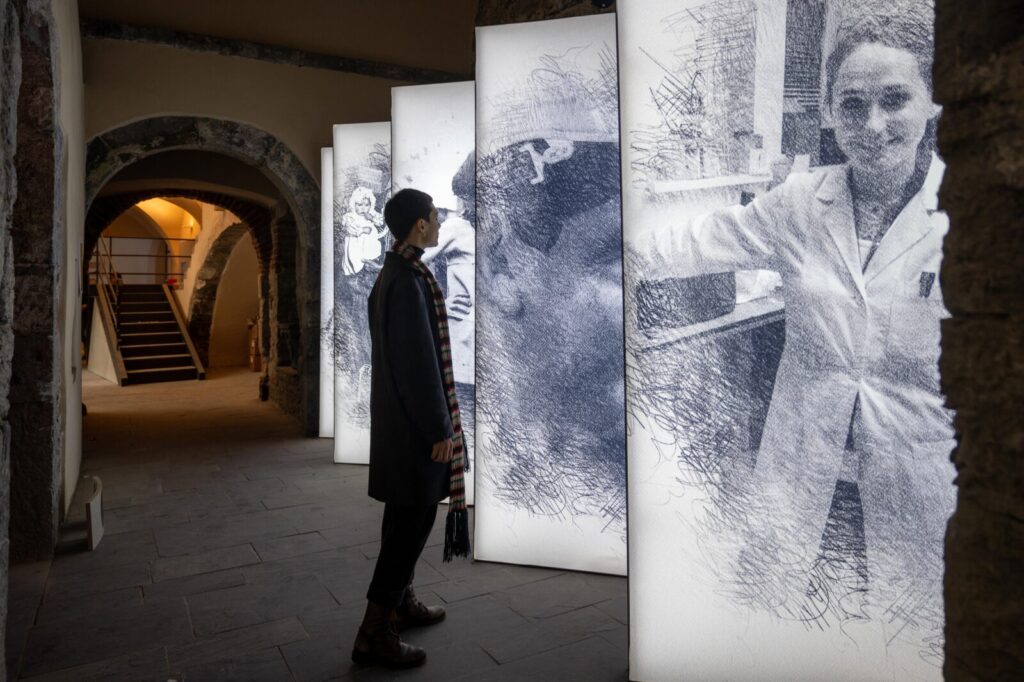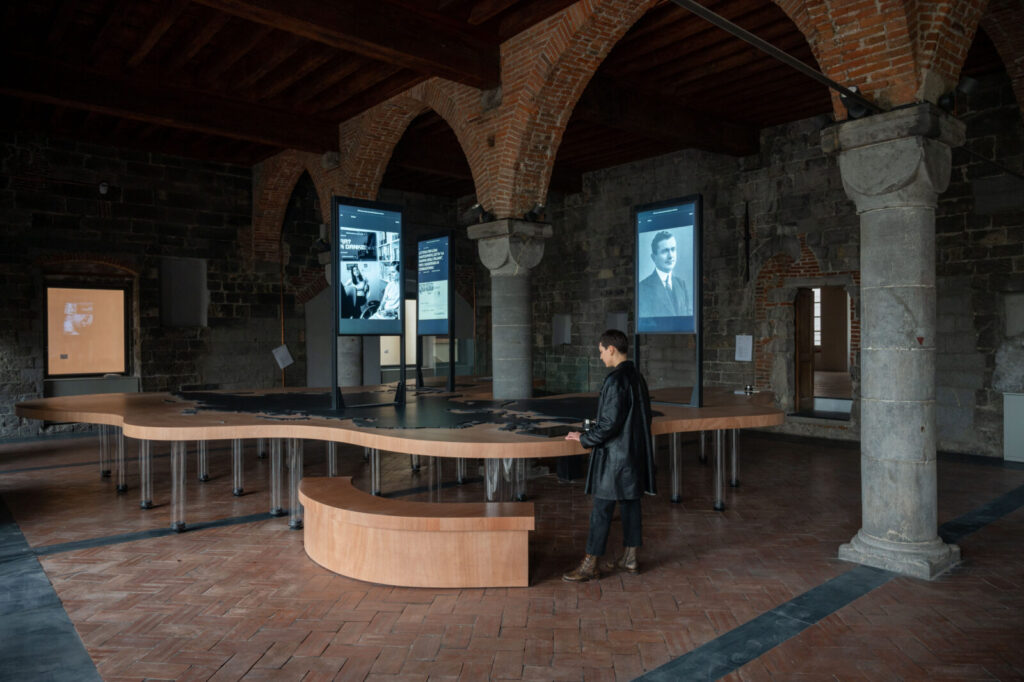
Genoa, Commenda di San Giovanni di Prè: the new MEI – Museo nazionale dell’Emigrazione Italiana (National Museum of Italian Emigration) opens today.
The exhibition was set up by ETT according to a multimedia approach in the renovated hospital.
The inauguration, at the Commenda at noon, was attended by the Minister for Cultural Heritage, Activities and Tourism, Dario Franceschini; the Mayor of Genoa Marco Bucci; the President of the Liguria Region, Giovanni Toti, and the founding members of the MEI Foundation.
More than 200 stories of emigration, 1300 archive images accessible thanks to 70 multimedia stations and 25 laser projectors provided by the Genoa-based company ETT, a leading digital company. Massimo Olcese is among the parties involved in the creation of the live scripts. The visitors can interact with spaces and items through immersive, 360-degree experiences


Genoa, 11 May 2022 – 16 rooms, 70 multimedia stations, 65 monitors, 25 laser projectors, over 200 stories of emigration and 1,300 archive images. These are the numbers of the New MEI – National Museum of Italian Emigration at the Commenda di San Giovanni di Prè, a 12th-century Romanesque complex near the railway station of Genova Principe. The MEI is the result of an agreement between the Ministry for Cultural Heritage and Activities, the Liguria Region and the Municipality of Genoa, and was inaugurated today in the presence of the Minister for Cultural Heritage, Activities, and Tourism Dario Franceschini, the Mayor of Genoa Marco Bucci, the President of the Liguria Region Giovanni Toti and the founding members of the MEI Foundation.
With access to an immense archive of original audio and video materials, ETT, the Genoa-based company leader in digital solutions and creativity, was able to literally set up the exhibition by studying ad hoc materials capable of supporting the multimedia stations available across the entire itinerary offered to visitors.
“ETT is very pleased to have contributed to a work such as that of the MEI, an exhibition that speaks of emigration that has been happening since the mid-19th century and still continuing to date ,” said ETT’s CEO Giovanni Verreschi during the inauguration of the new Museum of Emigration. “Genoa,” added Verreschi, “has been a port of departure for people from all the Italian regions heading to the five continents since the origins of the migration flows. Thanks to immersive techniques, we did not want to forget the faces and expressions that were captured and made available by the multimedia solutions, to offer to visitors the chance in 2022 to meet again those who came before us and those who still today, with very different motivations than those of the past, still choose to emigrate. It is specifically thanks to the use of immersive technology that we have been able to give a name again today to a phenomenon often approached as an undifferentiated and anonymous flow of people”.
MEI’s goal is not educational or conceptual but offers suggestions through a few scenic elements in a neutral environment, to show the identity of a city structurally linked to the phenomenon of migration. It was from Genoa that people left to reach the Americas, Africa, Asia and Australia, just as emigrants from Piedmont, Veneto, Sicily, Naples, etc. reached Genoa between the mid-19th century and the early 20th century, each speaking their own dialect and so skilfully recreated in the exhibition by the actors chosen from specific areas of Italy. In short, migration is a Genoese phenomenon but with a national and international scope.
The stages of the exhibition are minimalists and essential, while particular care has been paid to the characters, to put the people at the centre. The narrative instrument par excellence is the cinematic close-up.


At the entrance hall, a series of LED lights link Italy with the continents to which migrants sailed. At the same time, three monitors provide data on departures and returns and the reporting period.
The emigration destinations are subsequently projected on the stained glass window that splits the Commenda from the Lower Church, while five totems analyse the phenomenon of migration with different narratives. In fact, it is storytelling that is the basic communicative feature adopted by MEI and ETT.
What the exhibition’s authors wish to trigger is a feeling of empathy towards the migrants, profiled not so much by socio-demographic data as by their expressions and faces, as it emerges from the backlit panels as close-up shots at the crucial moment of departure. Five people departing (late 19th century – 2000s) are shown. Depending on the time period, the motivations behind the choice to leave are different.
Along the itinerary inside the Ospitale di Prè (Area A04 – The Health of Italians) it is also possible to sit down to dine with 20th-century migrantsto learn about the diet of the past and possible consequences on health, among the factors that certainly pushed people towards leaving their homeland. The kitchens are projected onto a large, zenith-lit table.
In area A06 there is a further projection, that of the tavern to which the migrants return to reunite with their companions, while in the corridor towards the staircase on the wall the scene of the train windows from which six people are seen waiting is shown. And here, too, the storytelling is that of close-ups.

At the same time, the entire world image is embossed on a large table from which the Ministry of Foreign Affairs’ National Diary Archive can be accessed via recessed monitors, so that stories and archive footage can be collected while interacting with the map.
The victims recorded among the migrants are commemorated by a memorial, designed as a large earth globe suspended from the ceiling from which red ropes descend, labelling the place of the tragedies.
On the second floor, the immigration officer, the employer, the landlady, the policeman, the trade unionist symbolize the people encountered by the migrants and, through a labyrinth, also by the visitors.
With regard to the types of work carried out by our compatriots abroad, particular attention has been paid to construction workers, who often found themselves lost in unfamiliar and different contexts respect to those in Italy. The iconic image of migrants eating on the steel beam hundreds of metres above New York City is shown on the east wall (the photo is by Charles B. Ebbets, taken on 20 September 1932 during the construction of 30 Rockefeller Plaza at Rockefeller Center).
The lamppost and the bench with two actors conversing represent, Little Italycharacterised by the presence of a typical early 20th-century New York bar, with the bar counter and the waiter cleaning glasses as shown by a vertical monitor while telling his story as an emigrant.
On the apse of the upper church, images related to the themes of internal and contemporary emigration are projected through totems with LED monitors. Finally, a cloud of words chosen by all the visitors is projected to define the most recurrent semantic areas and summarise the visitors’ reading angles of the migration phenomenon.
